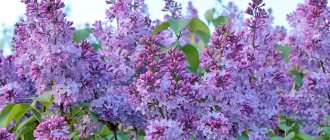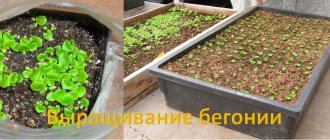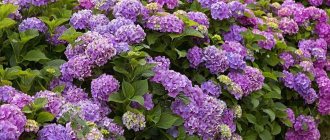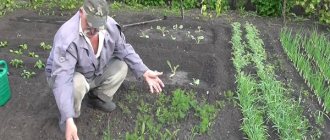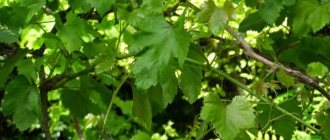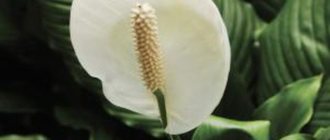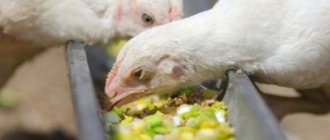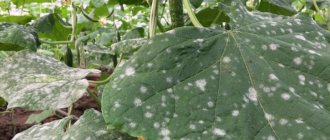Indoor anthurium comes from the tropical thickets of southern countries. Being placed in a cramped pot and climatic conditions completely alien to him, he feels like a slave and often takes a long time to get used to his new habitat. You need to work hard to provide it with the comfortable conditions necessary not only for life, but also for magnificent, continuous, long-term flowering. The anthurium flower, some call it differently, male happiness, is very demanding of care and needs constant attention to itself. At the slightest deviation from the norm, problems may arise in the form of various diseases, which the flower usually tolerates very hard. This article will be about methods of treating anthurium diseases.
Diseases
There are fungal, viral and non-infectious types of anthurium diseases.
It is impossible to cure anthurium with folk remedies; you will only waste time and it will die. Therefore, remove and destroy all affected parts of the plant. Spray the flower with any fungicide. The most effective drugs are Fitosporin-M, Alirin-B and Fundazol. Carry out the spraying procedure outdoors or in non-residential premises. Place the pot with anthurium in a large plastic bag, treat it with a fungicide, close the bag tightly and leave in this condition for 15 - 20 minutes. Then open the bag, carefully take out the flower, let it dry and only then put it back in place. After 7 – 10 days, repeat the treatment. Observe the diseased plant - a third procedure may be needed in a couple of weeks.
Fungal diseases
The most common fungal infections are stem rot, root rot, septoria, fusarium, powdery mildew and rust.
To treat fungal diseases, fungicides are used, special preparations for diseases of indoor flowers, and only them!
Stem rot
If you regularly water the flower, if after watering excess water sits in the tray for a long time, if the room temperature is below the permissible level, the anthurium will almost certainly develop a disease such as stem rot. Watery black spots will appear on the stem. The rot will gradually spread to other parts of the plant and the leaves will begin to rot. The affected parts of the plant will die. On the affected areas, under a magnifying glass, small sporangia are visible, initially white, then turning black.
What to do? Isolate the diseased flower. Trim off all affected parts of the plant. Spray the plant with fungicides, such as phytosporin, twice, at intervals of a week. Check the plant for pest damage. Perhaps he was attacked by thrips. If the disease is advanced, the flower must be destroyed. Check the living conditions of other flowers to prevent them from getting sick.
This may be interesting: Calceolaria indoors - growing from seeds and care
Root rot
Frequent watering, low temperature, poor drainage in a flower pot and other deviations from the norm can cause this disease. When the roots of a plant rot, its leaves noticeably turn pale, and then turn yellow and begin to wither. The roots become soft and rotten. The root sheath peels off from the middle and the roots look frayed.
If the disease has not yet started, sharply reduce watering of the plant and reduce the air humidity in the room. Trim off wilted leaves. Remove the plant from the pot, free the roots from the soil, trim off any damaged or rotten parts, and if there are areas of healthy root system left, plant the anthurium in a new pot with suitable healthy soil. Don't forget about drainage! Water the plant with Fitosporin-M or Alirin-B. Wait, the result should be positive. If the disease is advanced and rotting has affected all the roots of the anthurium, it will not be possible to save the flower; it will most likely die.
Septoria
Brown spots of irregular shape with a yellow or brown border appear on the leaves. Under a magnifying glass, tiny black dots of sporangia can be seen on the spots.
What to do:
Severely affected leaves should be picked and removed. Reduce air humidity. Stop spraying the plant with water. Feed the flower with fertilizer for flowering plants. Inspect for pests. If there are none, spray with Fitosporin-M or copper-containing preparations.
Fusarium
With fusarium blight on anthurium, massive leaf wilting begins. They turn yellow and dry out, and then fall off. A white coating with a pink tint has appeared on the root collar. A very dangerous disease. The infection is spread by water when watering plants when air humidity and temperature are too high.
If the disease is in its early stages, try spraying the above-ground part of the plant with a fungicide, and add a soil pesticide to the soil. Repeat treatment after 5 – 7 days. But keep in mind that there is no effective way to treat fusarium. A diseased plant will most likely die and will need to be destroyed!
Powdery mildew
The leaves of the anthurium began to turn yellow and curl. Their defeat is similar to chlorosis. But if the leaves not only turn yellow, but become noticeably smaller, the internodes grow shorter and shorter, then this is not chlorosis, but powdery mildew. Light gray spores are clearly visible on the back of the leaves - this is a fungus. If the infection is severe and left untreated, the leaves will dry out completely. What to do? Treat! Using fungicides. (for a description of the treatment of fungal diseases, see above)
Rust
If light spots appear on the upper side of the leaf and brown pustules on the lower side, your anthurium has most likely become infected with a fungal infection called rust. On the underside of the leaves, spores develop rapidly, the spots merge together and the leaves dry out completely. This disease must be treated with fungicides. (for a description of the treatment of fungal diseases, see above)
This may be interesting: Spathiphyllum - how not to miss Women's happiness
Reasons for the drying out of the flowers of “male happiness”
Flowers may dry out for several reasons:
- Soil depletion. In this case, the plant needs to be replanted, changing the soil to a suitable and nutritious one.
- Lack of drainage. If there is no drainage in the pot, the plant may begin to rot, the flowers will dry out or fade first, and then the same may happen to the leaves. Replace the pot with a similar one, but with a drainage system.
- Incorrect watering. If the watering schedule is organized correctly, then you need to pay attention to the fact that you cannot water the plant with tap water.
You can moisturize only with settled water and preferably at room temperature. - Lack of nutrients. During flowering, the plant requires special care. Therefore, you need to fertilize more often than in other periods.
- Diseases or pests. Inspect the plant; perhaps the cause of wilting is bugs that feed on the flower and prevent it from developing.
Viral diseases
Bronzing virus
If your pet's leaves begin to partially discolor, wrinkles and small holes appear on the surface, the anthurium may have become infected with the leaf bronzing virus. This disease is usually carried by thrips from other affected plants.
Unfortunately, there is no treatment; the diseased plant will have to be destroyed. Inspect the remaining specimens of flowers for infestation with thrips; if necessary, combat these pests with insecticides (actara, actellik).
Why do anthurium leaves dry in spots or entirely?
Most often, leaves may turn yellow due to natural reasons. If the plant is not properly cared for or is exposed to fungal or infectious diseases, the foliage becomes covered with brown spots and gradually dies. Therefore, flower growers must carefully monitor the condition of their exotic plants, then a number of difficulties will not arise.
Anthurium
Natural aging process
Mature plants that grow for many years and are not transplanted to a new location experience a lack of nutrition. After all, the soil, even with the use of constant fertilizing, is depleted. As a result, the leaves become old and gradually dry out. Most often this occurs in plants aged 6-7 years. The lower leaves die first.
Natural yellowing of flower leaves
Improper care
Improper care can manifest itself in different ways, and the solution to the problem depends on the cause. Main criteria to pay attention to:
- correct watering. With excessive watering, the roots of the plant begin to rot, and the leaves of the anthurium flower become covered with dark brown spots and turn black. If the cause is not eliminated in time, the plant may completely lose its foliage. A flower may also remain without leaves due to lack of moisture: the bush gradually turns yellow, dries out, and withers.
- maintaining a high level of environmental humidity. Anthurium is an exotic plant, so it loves very humid air. It can be made like this using a plate with wet expanded clay, water, damp moss, or using a special air humidifier. At low humidity, the flower begins to dry out, and parasitic insects appear on the leaves, which contribute to the formation of dark spots and the death of the leaf blade.
- Regular ventilation is what anthurium needs. Stagnant air negatively affects the appearance of the flower and leads to drying of the leaf plates.
Important! It is necessary to monitor the quality of water. It should be soft, neutral, well-settled, and at room temperature. If watered with too cold water, the leaves may turn black and fall off.
Brown spots on leaf blades
Recent transplant
If, after a recent transplant, the anthurium leaves turn yellow and dry out, most likely the problem is in the new soil. It must meet the following requirements: be nutritious, loose, enriched with a large number of mineral mixtures. Both special soil for anthuriums and a self-prepared soil mixture are suitable. It should consist of:
- light turf;
- humus;
- peat;
- river sand or perlite;
- complex mineral fertilizer.
Important! A drainage layer must have been laid at the bottom of the pot. Expanded clay is best suited.
Diseases and pests
Of course, diseases and pests cause damage to the anthurium leaf plate. Diseases rarely appear, the plant has good immunity. The only exception can be for root rot, which occurs as a result of systematic waterlogging. Pests dangerous to flowers:
- scale insect;
- spider mite;
- aphid.
You need to fight them with the help of insecticides, sold in any flower shop.
Leaf damaged by pests
Non-communicable diseases
Chlorosis
If you notice that yellow spots appear on the green leaves of your pet in bright light, this is evidence that the plant lacks nutrition, in particular magnesium and iron.
Regularly feed your flowers with fertilizers for ornamental flowering plants containing these elements.
Vegetable pox
If yellow-green bulges and yellowish ring-shaped spots suddenly begin to appear on the beautiful leaves of your anthurium, it means that somewhere you made a mistake in caring for it. This happens at low ambient temperatures and high humidity. If, in addition, you forgot about regularly feeding the anthurium, it will not have the strength to resist a disease such as smallpox.
Correct mistakes in plant care and wait patiently for results.
Enatsii
If the leaves of your anthurium begin to grow unevenly, become distorted, and become ugly and humpbacked in appearance, most likely your anthurium has become infected with enation. If the temperature in the room with the flower often fluctuates, there are drafts, sometimes too humid, sometimes too dry - then this is the reason. To be honest, the real cause of this disease is not yet well understood. Try to take proper care of the plant, and everything should return to normal.
Why do only the tips of the leaves dry out?
Anthurium flower - why leaves and flowers turn black and dry
Sometimes only the tips of anthurium leaves dry out. This happens either because the air is too dry or when certain insect pests appear. The same problem can be caused by sunbathing for too long, which can also lead to sunburn. The latter appear in the form of yellow or brown spots on the leaves.
Dried tips of leaves
Other problems due to improper care
- Dark spots and dots appeared on the leaves. Your pet may be cold. Move it to a warmer and brighter place. Do not water more often than required.
- The leaves turn yellow, their edges dry out. Perhaps the flower came under direct sunlight and got burned. Remove the pot from the sun or shade the blinds and create diffused lighting.
- The tips of the leaves have turned black. It is possible that an excess of nutrients has formed in the soil, in particular calcium salts. Repot your anthurium in new soil with a potting mix suitable for it.
- The leaves turn yellow and wither. The room temperature may be below comfortable. The optimal temperature during the growing season is 22 - 25 degrees, during the winter dormancy period 16 - 18 degrees.
- Lack of flowering. There are many reasons: low light, poor soil, large pot, low humidity and others. Read about the reasons for the lack of flowering in anthurium in the corresponding article on our website. Eliminate these causes and enjoy lush blooms for many years to come.
- Anthurium leaves turn black. There are several reasons. Perhaps the water you use for irrigation is too hard; perhaps the water is too cold; Perhaps it is chlorinated and did not have time to settle. Or perhaps you are not removing excess water from the pan. It stagnates there, and this provokes rotting of the roots. Soften hard water with a drop of lemon juice or acetic acid. The water must have a temperature not lower than room temperature and be settled. Water infrequently, but thoroughly, so that excess water seeps out of the drainage holes at the bottom of the pot into the tray. After some time, remove the water from the pan.
- Anthurium leaves turn yellow in a number of other cases: soil waterlogging; lack of soil in the pot, roots stick out; drafts, lack of lighting; bad water for irrigation; poor soil; unsuitable ambient temperature for the season. Analyze your conditions for keeping a tropical guest, eliminate the errors - and everything will return to normal.
- Anthurium leaves curled into a tube. Perhaps too bright lighting provoked the anthurium to turn on its defense mechanism. Place your flower out of direct sunlight and the leaves will unfurl again.
- Black spots appeared on the flowers. Perhaps you sprayed your plant carelessly and large drops of water fell on the flowers. Spray the plant carefully with a fine sprayer, avoiding getting on the flowers. Another such embarrassment occurs when the soil mixture is incorrectly selected for the flower - there is a lot of calcium in the soil. Such soil will have to be replaced.
- Thickenings and tubercles appeared on the roots of the anthurium. This means that the anthurium was affected by root nematodes. This disease cannot be cured. Destroy the plant along with the pot.
This may be interesting: Zephyranthes (Upstart) - home care
How to prevent leaves from drying out
It is much easier to organize suitable conditions for anthurium than to then treat a drying bush. Thus, for the plant to feel comfortable, it is necessary:
- Place the pot on eastern or western window sills in the summer, and move it to the southern ones in winter;
- Water the flower moderately, only after the substrate has dried;
- Organize a high-quality drainage system for water drainage by making holes at the bottom and placing a drainage layer in the pot (1/3 of the total height);
- Avoid direct sunlight on the leaves;
- Spray the bush and wash it regularly;
- Use suitable soil with the required acidity (5.5-6.5 pH).
Timely replanting (once a year) with a change of substrate will help avoid nutrient deficiency and maintain the health of the flower.
Some general tips for preventing common diseases
The overwhelming number of anthurium diseases could be avoided by following basic rules for caring for it. To prevent fungal infections from attacking the flower, it is enough to follow the watering regime and maintain the necessary air humidity. The plant should not be watered frequently or abundantly. There should be fresh air in the room, but remember that anthurium does not tolerate drafts! Viral infections are carried by insect pests and are more difficult to prevent. Keep the purchased plant in quarantine, change the suspicious soil, treat it with insecticides at the slightest suspicion of an attack by thrips or other sucking parasites. But it’s very easy to fight non-infectious diseases of anthurium. Just follow all the rules for caring for anthurium at home. If you have forgotten them, read the corresponding article on the website.
What to do if the trunk is exposed?
How to renew a plant?
Updating a plant is quite simple:
- The top of the plant is completely cut off, but 2-3 aerial roots are left, which will then need to be planted in the soil. It must be remembered that before replanting it is necessary to significantly grow the roots.
- The upper part of the bare stem should be wrapped in moss and moistened until the roots sprout. Then it can be planted in a pot.
Why did this happen?
Barrel exposure can occur for several reasons:
- Incorrect care. The watering system and lighting of the place where the pot is located should be reconsidered. A draft or being near heating elements is harmful.
- Plant aging. After 5-6 years, any flower needs renewal, even with proper care and attention.
- Diseases. Withering and falling leaves are a clear sign of the presence of diseases that need to be identified and eliminated as soon as possible. Otherwise the flower may die.
- Pests. Inspect the leaves and stems for pests (we provided more information about diseases and pests that can threaten anthurium here).
- Fertilizers. Use only fertilizer specifically designed for the plant.
